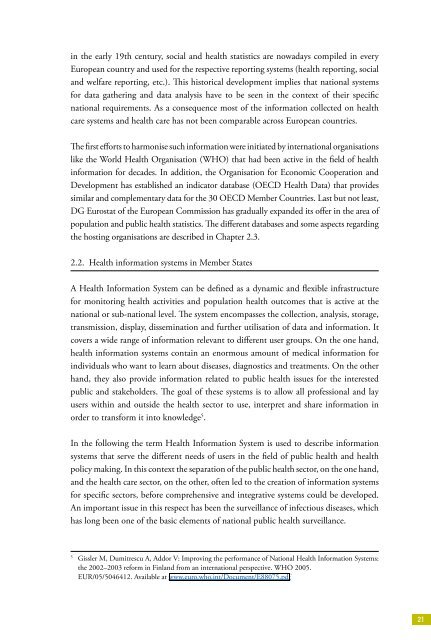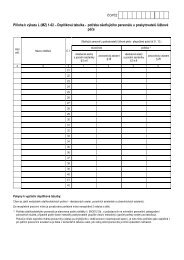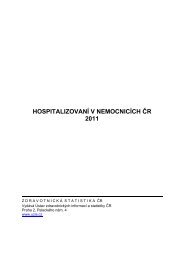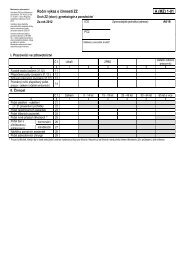ECHIM Final Report
ECHIM Final Report
ECHIM Final Report
Create successful ePaper yourself
Turn your PDF publications into a flip-book with our unique Google optimized e-Paper software.
in the early 19th century, social and health statistics are nowadays compiled in every<br />
European country and used for the respective reporting systems (health reporting, social<br />
and welfare reporting, etc.). This historical development implies that national systems<br />
for data gathering and data analysis have to be seen in the context of their specific<br />
national requirements. As a consequence most of the information collected on health<br />
care systems and health care has not been comparable across European countries.<br />
The first efforts to harmonise such information were initiated by international organisations<br />
like the World Health Organisation (WHO) that had been active in the field of health<br />
information for decades. In addition, the Organisation for Economic Cooperation and<br />
Development has established an indicator database (OECD Health Data) that provides<br />
similar and complementary data for the 30 OECD Member Countries. Last but not least,<br />
DG Eurostat of the European Commission has gradually expanded its offer in the area of<br />
population and public health statistics. The different databases and some aspects regarding<br />
the hosting organisations are described in Chapter 2.3.<br />
2.2. Health information systems in Member States<br />
A Health Information System can be defined as a dynamic and flexible infrastructure<br />
for monitoring health activities and population health outcomes that is active at the<br />
national or sub-national level. The system encompasses the collection, analysis, storage,<br />
transmission, display, dissemination and further utilisation of data and information. It<br />
covers a wide range of information relevant to different user groups. On the one hand,<br />
health information systems contain an enormous amount of medical information for<br />
individuals who want to learn about diseases, diagnostics and treatments. On the other<br />
hand, they also provide information related to public health issues for the interested<br />
public and stakeholders. The goal of these systems is to allow all professional and lay<br />
users within and outside the health sector to use, interpret and share information in<br />
order to transform it into knowledge 5 .<br />
In the following the term Health Information System is used to describe information<br />
systems that serve the different needs of users in the field of public health and health<br />
policy making. In this context the separation of the public health sector, on the one hand,<br />
and the health care sector, on the other, often led to the creation of information systems<br />
for specific sectors, before comprehensive and integrative systems could be developed.<br />
An important issue in this respect has been the surveillance of infectious diseases, which<br />
has long been one of the basic elements of national public health surveillance.<br />
5<br />
Gissler M, Dumitrescu A, Addor V: Improving the performance of National Health Information Systems:<br />
the 2002–2003 reform in Finland from an international perspective. WHO 2005.<br />
EUR/05/5046412. Available at www.euro.who.int/Document/E88075.pdf<br />
21
















